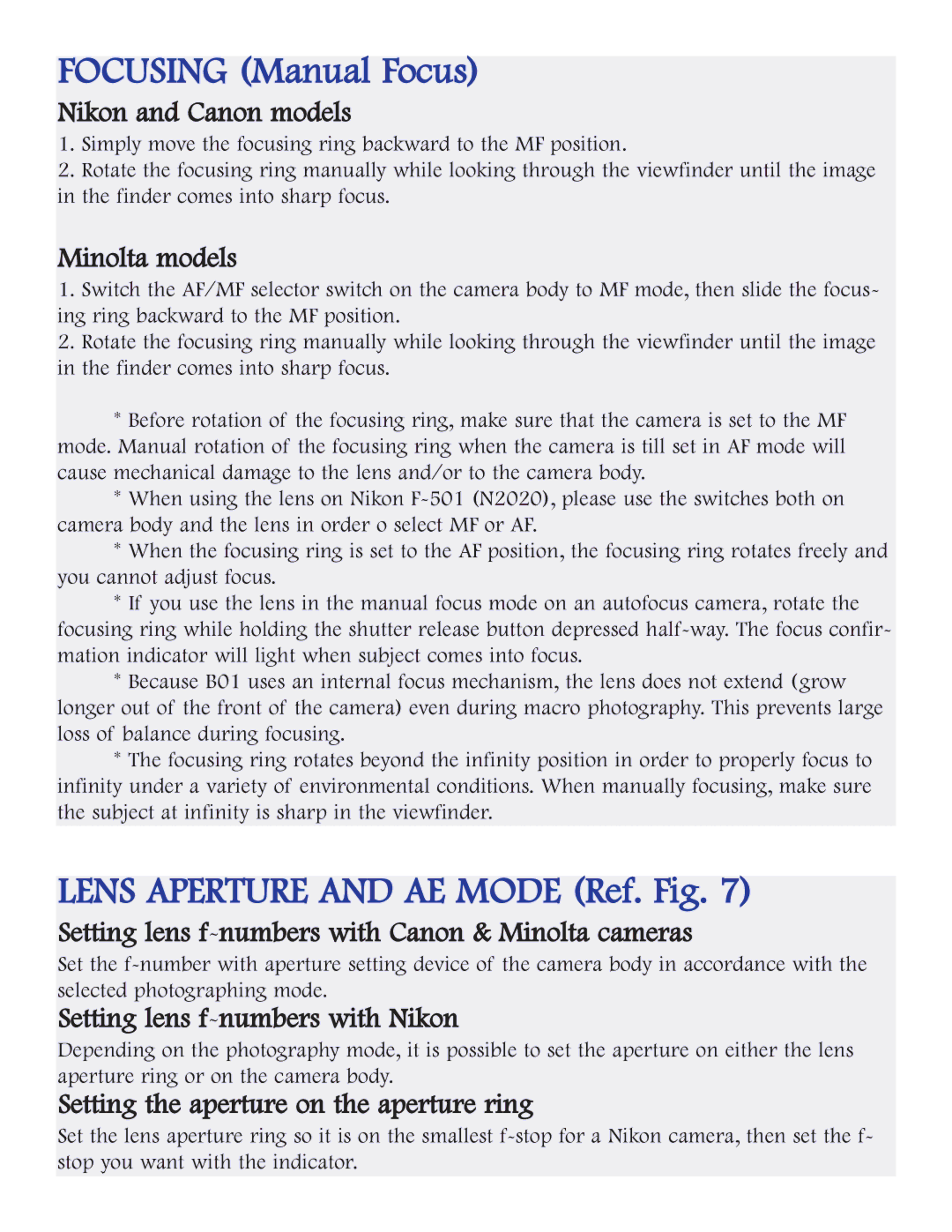AFB01N700, AFB01C700, AFB01M700 specifications
The Tamron AFB01M700, AFB01C700, and AFB01N700 are a series of high-performance lenses designed for professional photographers and enthusiasts alike. These lenses are part of Tamron's robust lineup, catering to various photography needs while delivering exceptional image quality and versatility.One of the standout features of these lenses is their advanced optical design. Each model incorporates high-grade glass elements, including aspherical and low dispersion (LD) glass, which work together to minimize chromatic aberration and enhance overall image clarity. This meticulous engineering results in sharp images with vibrant colors, making them suitable for a wide array of photographic genres, from landscapes to portraits.
The Tamron AFB01M700 is particularly notable for its impressive zoom range, providing photographers the flexibility to shoot in various situations without the need to frequently change lenses. It features a fast and accurate autofocus system, which is essential for capturing fast-moving subjects. This lens also includes vibration compensation (VC), helping to reduce camera shake and ensure steady shots, even in low-light conditions.
On the other hand, the AFB01C700 variant caters to those looking for a dedicated macro lens. It offers exceptional close-up capabilities, allowing users to capture intricate details in subjects such as insects or flowers. This lens is equipped with a high reproduction ratio, while its versatile focal length makes it a fantastic choice for both macro and general photography.
The AFB01N700 model stands out with its lightweight design and compact build, making it an excellent option for travel photography. Despite its portability, it does not compromise on performance. It incorporates Tamron's innovative coatings that minimize flare and ghosting, allowing for clear and contrast-rich images even in challenging lighting conditions.
All models in this series feature a robust build quality, with weather sealing to protect against moisture and dust, which is essential for outdoor photography. Photographers can rely on these lenses to perform in various environments.
In conclusion, the Tamron AFB01M700, AFB01C700, and AFB01N700 lenses are versatile tools built for delivering outstanding photographic results. With their advanced optical technologies, robust features, and user-friendly designs, they cater to professionals and hobbyists alike, enhancing creative possibilities across different photographic styles. Whether you need a zoom lens, a macro option, or a lightweight travel companion, Tamron has created a lens to meet your needs.

